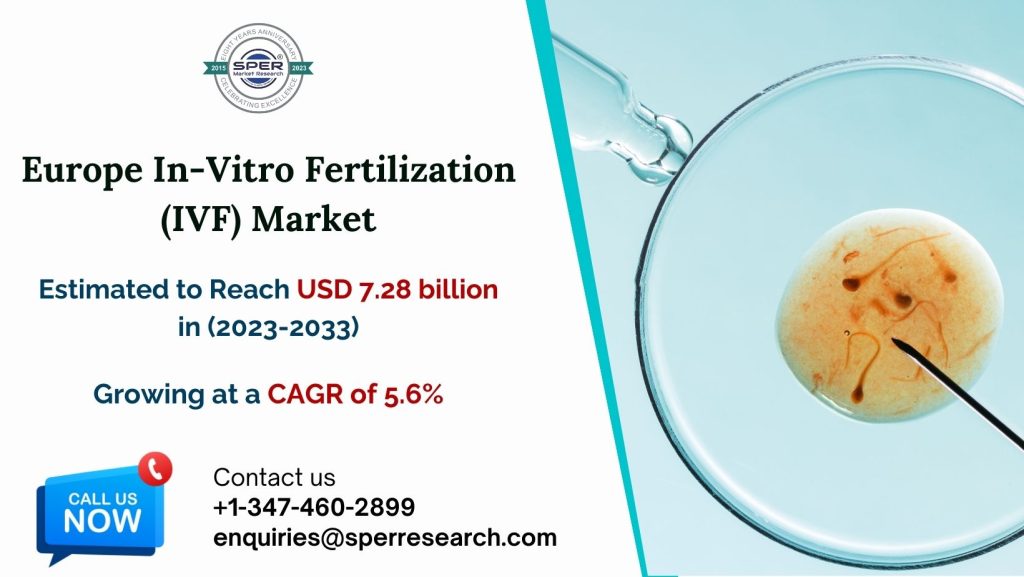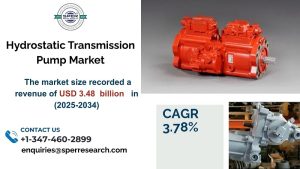One sort of assisted reproductive technology-based fertility treatment used in clinical settings is in vitro fertilisation. The market for IVF is largely driven by women who delay conception because older women have decreased odds of becoming pregnant. In women 35 to 39 years old, the success rate of IVF pregnancy conception is higher.
According to SPER market research, ‘Europe In-Vitro Fertilization (IVF) Market Size- By Cycle Type, By End User – Regional Outlook, Competitive Strategies and Segment Forecast to 2033’state that the Europe In-Vitro Fertilization (IVF) Market is predicted to reach USD 7.28 Billion by 2033 with a CAGR of 5.6%.
Factors driving the Europe In-Vitro Fertilisation (IVF) market include:
- Technological Developments: As assisted reproductive technologies continue to progress, more patients are drawn to undergo IVF treatments due to their higher success rates.
- Growing Infertility Rates: One major factor contributing to the growing demand for IVF procedures is the increasing frequency of infertility problems among couples.
- Ageing Population: The market for IVF is growing as a result of postponed parenthood and an increase in age-related infertility.
- Encouraging Regulatory Environment: Government programmes that support fertility therapies and favourable rules promote market expansion.
- Education and Awareness: Raising public knowledge about fertility treatments that are available and launching awareness campaigns help to dispel stigma and promote acceptance.
Challenges facing the European IVF Market:
- High Treatment Costs: Many couples find IVF treatments to be too expensive, which restricts adoption and accessibility.
- Ethical Debates and Concerns: Widespread acceptance of reproductive technologies, particularly IVF, may be hampered by ethical discussions and worries.
- Limited Insurance Coverage: Patients who receive insufficient insurance coverage for fertility treatments face financial hardships, and the market can’t grow as much.
- Emotional and Psychological Impact: Couples undergoing IVF operations frequently experience emotional stress and psychological difficulties, which can influence their choice of treatment.
- Legal and Regulatory Obstacles: Standardisation and commercial expansion may be hampered by the disparate legal frameworks among European nations.
In order to overcome obstacles and seize expansion opportunities, it is imperative that stakeholders in the European IVF market comprehend and take action on these aspects.
COVID-19 Impact: The pandemic caused obstacles for the Europe In-Vitro Fertilisation (IVF) business. Priorities within the healthcare system, travel restrictions, and lockdowns all affected IVF treatments. Cancellations and delays resulted from the temporary suspension of non-essential medical services, such as reproductive treatments. Reluctant to seek reproductive therapy, patients faced uncertainties. Still, the market showed signs of life as regulations relaxed and safety precautions were prioritised once more. Strategic planning and resilience are critical in the IVF industry, as the epidemic has shown.
Europe’s IVF market is steadily expanding in nations including France, Germany, and the United Kingdom. The U.K. Human Fertilisation and Embryo Authority (HFEA) and other regulatory bodies closely oversee in vitro fertilisation treatments and research in the country, which supports the expansion of the regional market. Germany’s declining birthrate contributes positively to the market’s growth rate. It is expected that the availability of reimbursement policies in the European region would lead to a boom in the IVF industry in that region.
Europe In-Vitro Fertilization Market Key Players:
Additionally, some of the market key players are Cadila Healthcare Ltd., DRK Kliniken Berlin, EMD Serono Inc., LG Life Sciences, Sun Pharmaceutical Industries Ltd., Thermo Fisher Scientific, Inc., others.
Europe In-Vitro Fertilization Market Segmentation:
The SPER Market Research report seeks to give market dynamics, demand, and supply forecasts for the years up to 2033. This report contains statistics on product type segment growth estimates and forecasts.
By Cycle Type: Based on the Cycle Type, Europe In-Vitro Fertilization (IVF) Market is segmented as; Donor Egg IVF Cycle, Fresh Cycle (Non-Donor), Thawed IVF Cycle (Non-Donor).
By End User: Based on the End User, Europe In-Vitro Fertilization (IVF) Market is segmented as; Clinical Research Institutes, Fertility Clinics, Hospitals, Surgical Centers.
By Region: This research also includes data for Denmark, France, Germany, Italy, Russia, Spain, UK, Rest of Europe.
This study also encompasses various drivers and restraining factors of this market for the forecast period. Various growth opportunities are also discussed in the report.
For More Information, refer to below link:-
Europe In-Vitro Fertilization (IVF) Market Challenges
Related Reports:
Follow Us –
LinkedIn | Instagram | Facebook | Twitter
Contact Us:
Sara Lopes, Business Consultant – U.S.A.
SPER Market Research
+1-347-460-2899



